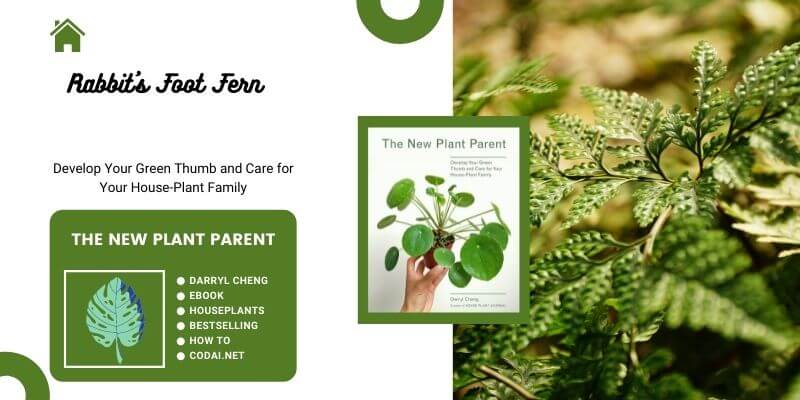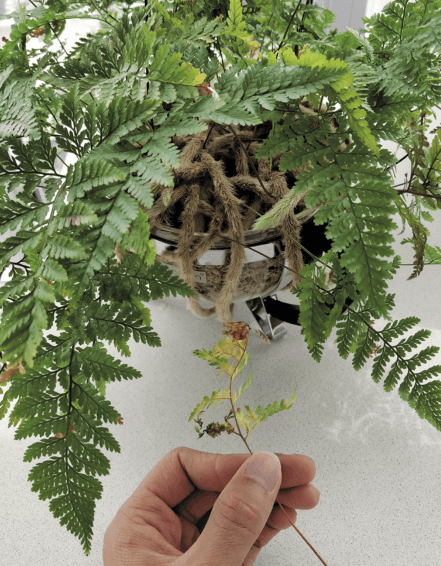[Ebook Việt Hóa] New Plant Parent - Darryl Cheng
[Ebook Việt Hoá] New Plant Parent (Darryl Cheng) – Phần 02 – Rabbit’s Foot Fern (Davallia fejeensis, Dương Xỉ Chân Thỏ)
- Nguồn: [Ebook] New Plant Parent: Develop Your Green Thumb and Care for Your House-Plant Family – Darryl Cheng
- Biên tập: Dũng Cá Xinh (Tháng 01/2022)
- Dịch: Team Codai.net
English
Rabbit’s Foot Fern
The rabbit’s foot fern (Davallia fejeensis) has more intricate foliage than a Boston fern, and its rhizomes are fascinating (although scary for some—there’s a reason it’s mistakenly called “tarantula fern”). The fronds of this fern don’t dry up in a mess of leaves; instead, they gradually turn yellow and fall off as one piece.
Survival strategy
This fern seems to be able to maintain itself with low light hovering around 100 foot-candles. The plant won’t grow much and will likely thin out, losing a number of fronds, but it should remain lush enough to keep you interested. While it can tolerate completely dry soil, you’ll need to gently loosen it with a chopstick before watering, or else the compacted pockets will never get wet. Just be careful not to pierce the rhizomes.
Growth strategy
With 200 or more foot-candles, the frond turnover should be slower. You can comfortably bring the soil to saturation whenever it becomes partially dry. The soil should be aerated occasionally. A general-purpose fertilizer will do whenever you find the plant is in growing mode, when several new fronds are unfurling.
Subjective life span
If you provide it with enough light, the rhizomes of this fern may completely surround its container in a few years. At this point, you can divide the entire plant or simply cut off a few rhizomes and transplant them into new soil.
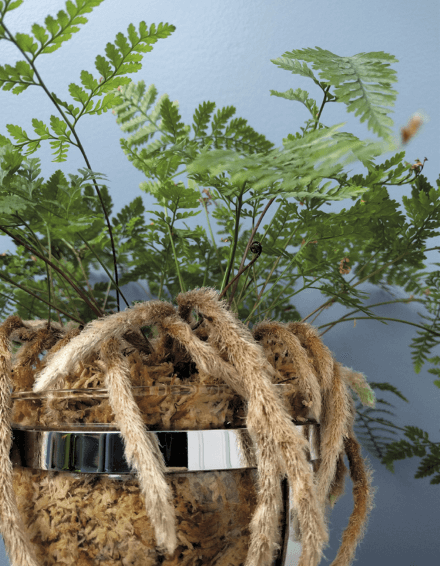
Rhizomes
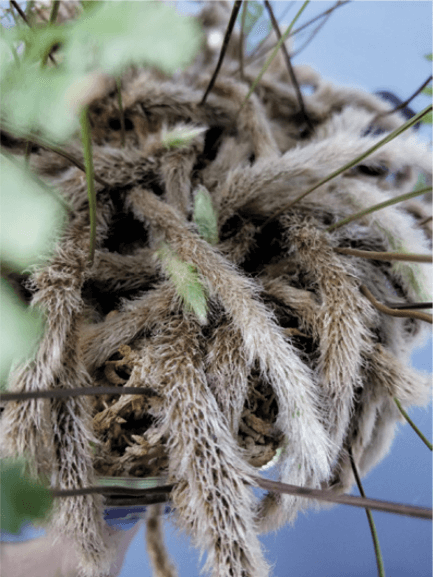
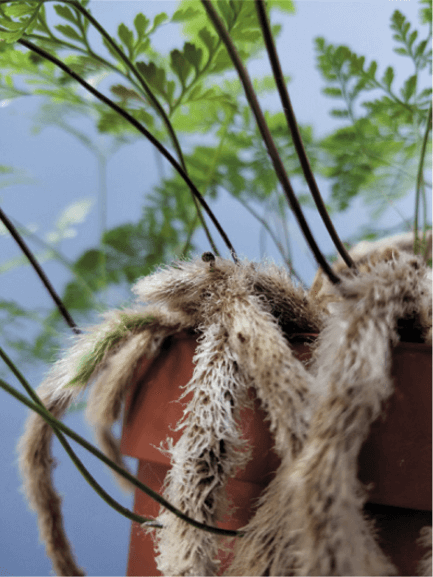
Repotting a Rabbit’s Foot Fern
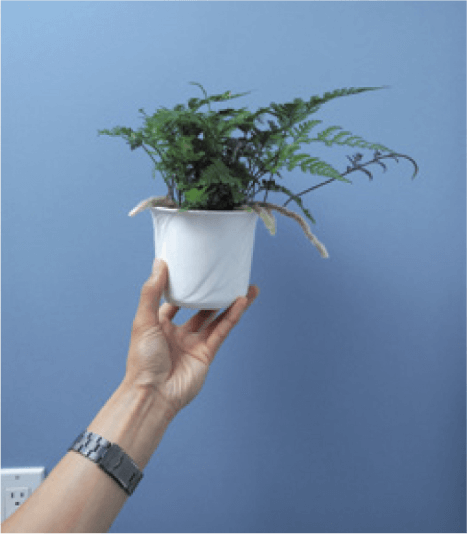
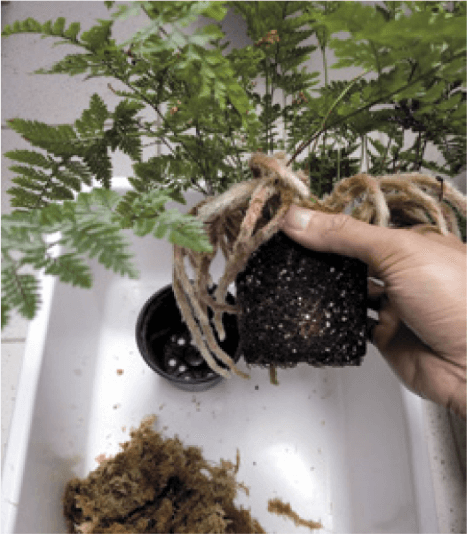
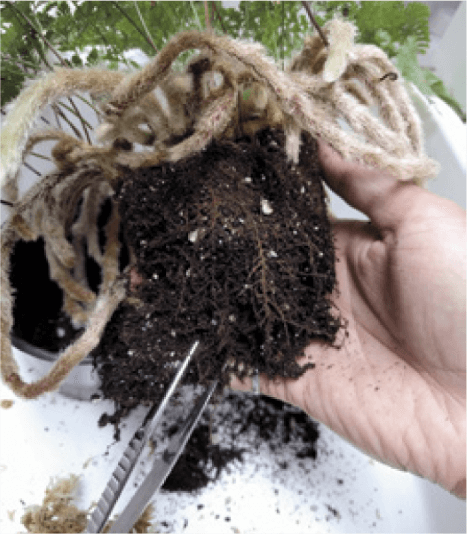
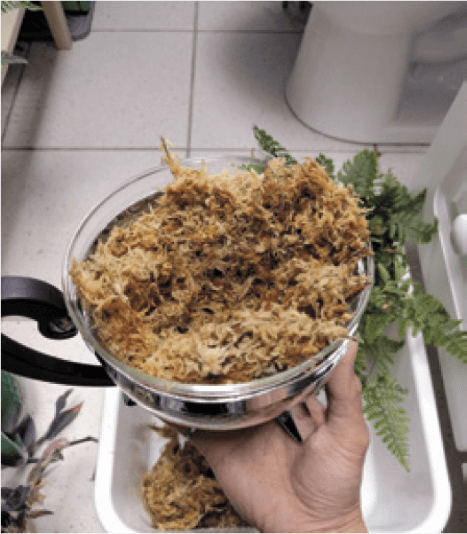
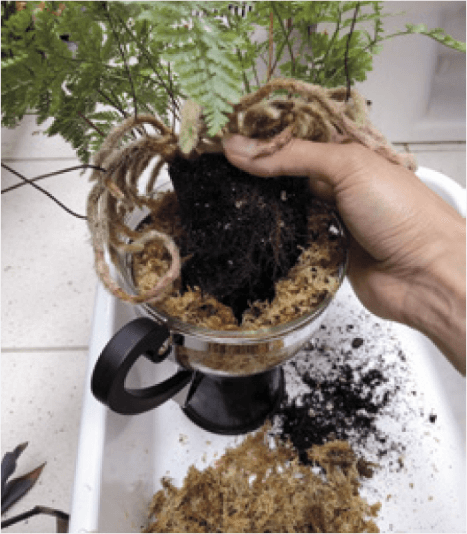
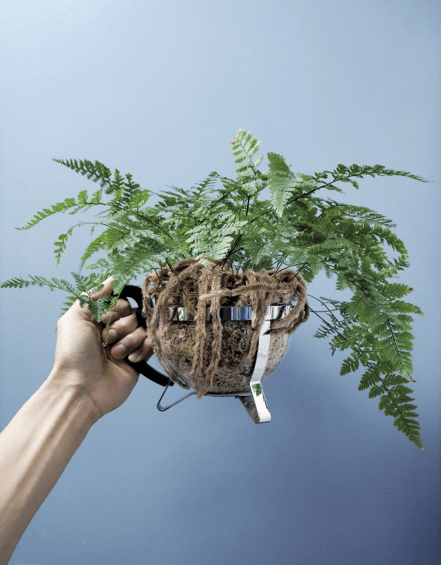
Tiếng Việt
Đang cập nhật
